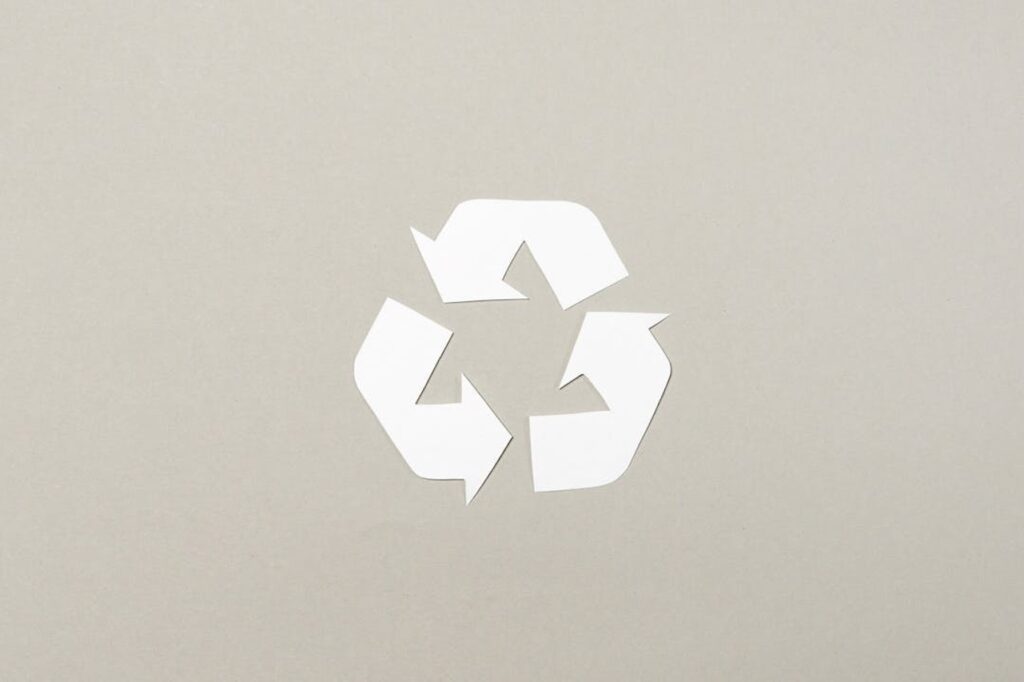The concept of the circular economy is revolutionising industries by promoting sustainability and efficiency. Unlike the traditional linear economy, the circular economy focuses on designing out waste, keeping products and materials in use, and regenerating natural systems.
Read on to find out how offices can integrate circular economy principles to create sustainable, efficient, and resilient work environments, by highlighting the benefits and addressing the challenges.
Benefits of Integrating Circular Economy
1. Design for Longevity and Reusability
A circular economy in office design involves selecting durable furniture and equipment that can be easily maintained, repaired, and upgraded. Modular furniture systems, for example, allow for parts to be replaced or reconfigured, reducing waste and extending the life cycle of office assets.
2. Enhanced Materials Recovery and Recycling Programs
Workplaces can generate substantial waste, from paper and plastics to electronics. Implementing comprehensive recycling programs ensures that materials are kept in circulation, aligning with circular economy principles.
Companies can also participate in ‘take-back’ schemes, where suppliers reclaim products at the end of their life cycle for recycling or refurbishing.
3. Increased Resource Efficiency
Efficient use of resources is a cornerstone of the circular economy. Workplaces can adopt energy-efficient lighting, heating, and cooling systems, and encourage practices such as double-sided printing and digital documentation to minimise paper use.
Water-saving fixtures and policies promoting mindful consumption also contribute to resource efficiency.
4. Adoption of the Sharing Economy
The sharing economy promotes the shared use of resources, maximising utilisation, and reducing redundancy. Offices can implement shared workspaces and equipment, such as printers and communal areas, to serve multiple teams, decreasing the need for individual items.
5. Waste-to-Resource Initiatives
Transforming office waste into valuable resources can significantly reduce environmental footprints. Organic waste, such as food scraps, can be composted and used to enrich soil in office green spaces or nearby community gardens. E-waste can be refurbished and resold or recycled for materials recovery.

Challenges and Solutions in Adopting Circular Economy Practices
1. Cultural and Behavioural Shifts
Shifting to a circular economy requires a change in mindset. Employees need to be educated about the benefits and practices of sustainability. Regular training sessions and awareness campaigns can foster a culture of environmental responsibility.
2. Initial Investment Costs
While circular solutions often lead to long-term savings, the initial investment can be a barrier. To mitigate this, companies can adopt a phased approach, starting with low-cost, high-impact initiatives such as improving recycling programs and gradually moving to larger projects like retrofitting buildings with energy-efficient systems.
3. Supply Chain Coordination
Achieving a circular economy requires collaboration across the supply chain. Businesses need to work with suppliers and service providers committed to sustainable practices. Establishing clear sustainability criteria for procurement and engaging in partnerships can drive collective progress.
Examples
1. Google’s Sustainable Office Initiatives
Google’s office campuses incorporate circular economy principles by using recycled materials in construction and furnishings, implementing robust recycling and composting programs, and designing flexible workspaces that can adapt to changing needs without significant resource input.
2. Philips Lighting as a Service
Philips began offering lighting as a service. Instead of selling light bulbs, Philips provides lighting solutions where they retain ownership of the equipment and are responsible for maintenance, upgrades, and recycling, ensuring that materials remain in use for as long as possible.

In Summary
Integrating circular economy principles into the workplace is not only environmentally beneficial but also economically advantageous. As the benefits of the circular economy become increasingly apparent, more organisations will likely implement these practices, contributing to a more sustainable future.
![The [RE]Search Co.](https://re-search.co/wp-content/uploads/2025/02/The-RE-Search-Co-Orange_Grey-png-350x51.avif)












